Domestic goats, mountain goats, and wild goats are the three types of goats. They became domesticated around 10,000 years ago. As of the present, 200 breeds are raised by humans.
Due to the goat meat and milk consumption, there’s a continuous delivery of newborn goats.
What are newborn goats called? Regardless of their gender, they’re called a ‘kid’. These babies need colostrum from their mother’s milk, which is thick and yellowish. This milk is packed with maternal antibodies or immunoglobulins, a source of energy, fats, and minerals. These are the essentials for the growth of a kid. They also strengthen their immune system to fight diseases.
Colostrum is also needed by kids to maintain body temperature, especially if the weather is cold. It’s filled with antibodies, and the kid should consume it within 6 hours after birth.
This is something noteworthy since the doe’s colostrum rapidly decreases in 6 to 12 hours.
In some cases, some people get baby goats from a farm and auction without much knowledge about them. For instance, the new owner doesn’t know whether the kid has taken colostrum or not.
If you’re in this situation, there’s more to know on how to properly raise kids.
How to Identify the Gender of a Baby Goat?
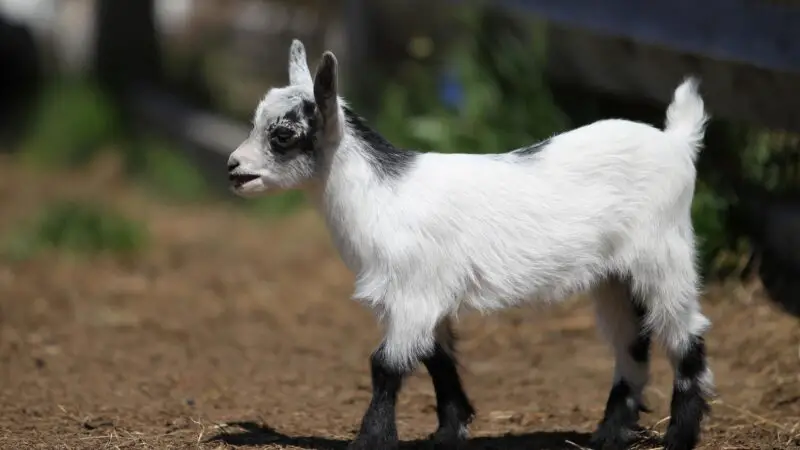
You need some time to identify the gender of a baby goat as you continue to observe. Generally, the one that grows faster is a male.
What Do You Do When a Baby Goat Was Born?
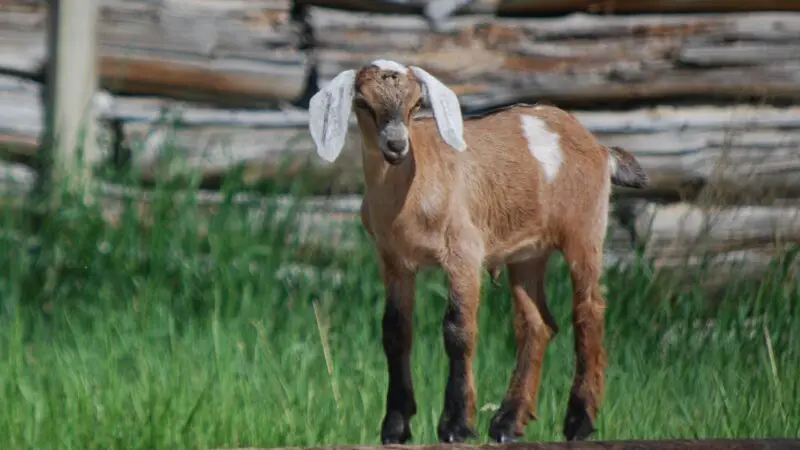
The first thing that you have to do is to check if the baby goat is breathing. Then, wipe the nose and head to make breathing easy for the newborn. If the baby is not breathing, insert a small part of the straw into its nose to encourage sneezing. You may also lift it by its rear legs and rub its sides with vigor.
When the baby goat is born under cold weather, thoroughly dry the tail and ears for protection against freezing. The rest of the body should be licked by the doe. Put the newborn beside its mother, so they get to know each other, and the bonding process proceeds.
A vigorous baby goat can stand right away after birth, while the weaker one may need a few minutes or more. It sometimes takes an hour for some kids to stand up and get fed by their mothers.
After putting a lot of attention on the baby goat, you have to check the mother’s teats to ensure that there’s milk supply.
You have to be good at judging whether the doe is doing a good job as a mother. Don’t transfer her to somewhere if she hasn’t finished delivering all the babies. If it happens in a pasture, it’s best not to move them into the kidding pen if the weather is fine.
How Do You Take Care of Newborn Goats?
Colostrum
See to it that the newborn goats have colostrum intake from their mother’s milk within 2 hours after birth. The nursing usually goes on for half an hour.
After 12 hours, the antibodies found in the colostrum begin to dwindle. Thus, the newborns should take time to get the milk.
The recommended amount of milk is 10% of the kid’s birth weight. For example, a 5-pound kid needs 0.5 pints of colostrum. Half of it must be obtained by the newborn goat within 2 hours.
Don’t combine the milk of different does since this action can lead to the formation of infections, such as Johne’s disease, mycoplasma bacteria, and CAE or caprine arthritis encephalitis.
Pooled colostrum can be given to newborn goats as long as it’s pasteurized. If it’s not available, commercially made colostrum can be the replacement. Be reminded that it’s different from a colostrum supplement. The ideal replacement should be obtained from bovine rather than the serum.
Feed
Within a week after birth, baby goats need milk, but overfeeding should be avoided. 32 to 40 oz a day is the recommended amount. In the first and second week, kids can have a feed, hay of good quality, or alfalfa. Apart from the things that they can nibble on, you can offer them water with salt and minerals.
Shelter
The right place for a kid is a small pen that is secluded from any drafts. Clean beddings should be added while the pen is kept dry. A heat lamp is generally not necessary. But you may need to transfer the baby goats into a warm area or inside the house if the temperature drops to 40 degrees Fahrenheit.
A playpen or a large box is enough if you only look after one kid. Some farmers make a ‘jacket’ for the baby goats to keep them warm. Ideally, this jacket is made of fleece or wool.
Castration
Many castrate male kids in the early stage of their lives. A rubber band is used to tie the scrotum most of the time. However, it poses two health risks, such as tetanus and the case of obstruction of the urinary tract called urolithiasis.
As long as the kid had colostrum intake, it has enough antibodies to defeat tetanus toxins. The doe should also be regularly vaccinated with tetanus toxoid. A booster should be given to her a month before giving birth.
Urolithiasis is usually experienced by a castrated goat that was under a highly concentrated diet or intended fattening. Thereby, it’s best to feed the kids grains and hay when they reach the 3rd to 8th week. Additionally, the castration can also be delayed. Pain control is a must when doing this process, and a discussion with the vet will help a lot.
Vaccination and Worm Control
The proper worm control can’t only be done through medication. Sadly, some parasites that exist in ruminant farms are immune to multiple dewormers. So, it’s better to work on prevention as cure can be ineffective in some cases. Nonetheless, good management in the area where your goat lives make a big difference.
One can start with housing and pasture improvement. The hay racks and feed bunks should be elevated. Apart from giving the goats high-quality feeds, rotational grazing is also helpful.
Vaccinations and worming are given to the kids that are 2 to 4 months old. Be mindful about putting them in the pasture as they’re sometimes exposed to parasites. Before deworming, it must be confirmed through a fecal test.
Frequently Asked Questions
How Much Does a Newborn Goat Cost?
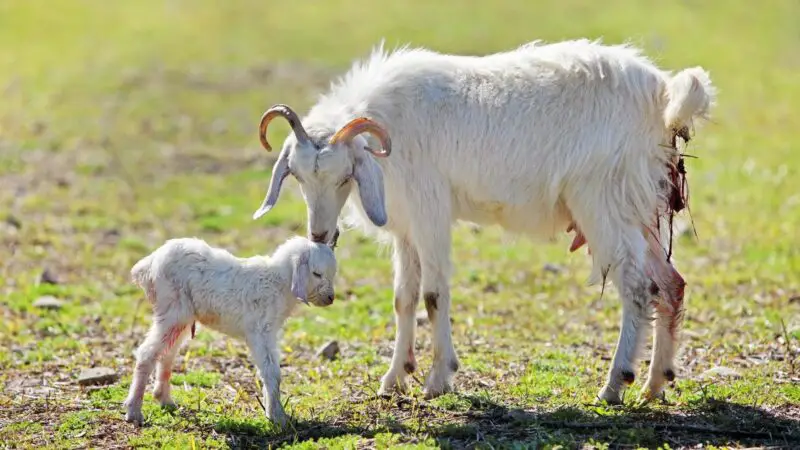
A newborn goat can cost around $70 to $250 or even more as it depends on its breed.
What Is a Mother Goat Called?
The mother goat is called ‘nanny’ or ‘doe’.
Why Are They Called Billy Goats?
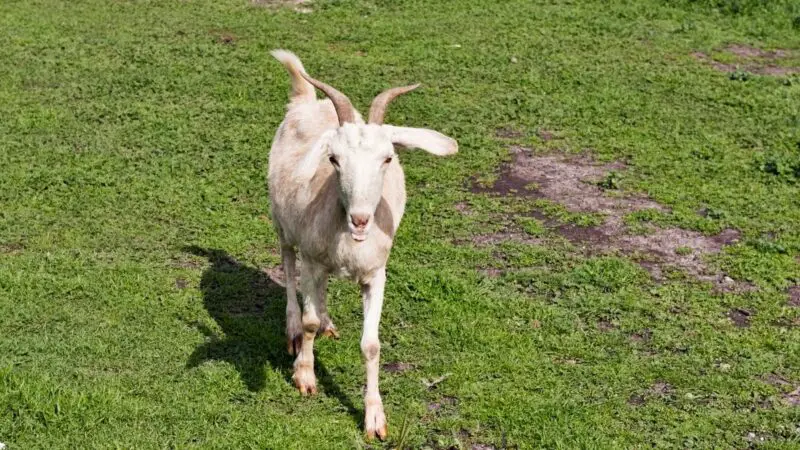
The term ‘Billy goat’ is from one of the famous tales from Norway entitled ‘The Three Billy Goats Gruff’. There’s also a famous place in Chicago called ‘Billy Goat Tavern’.
It was established in 1934 by William Sianis. A goat fell out of the track and wandered. Sianis found the animal, adopted it, and named it ‘Billy goat’.
Billy goats are all goats, and they’re referred to as a ‘ram’. However, all goats are not Billy goats because the female counterpart is either called doe or nanny.
What Is a Male Goat Called?
A male goat is called ‘buck’ or ‘billy.’
How Cold Is Too Cold for Baby Goats?
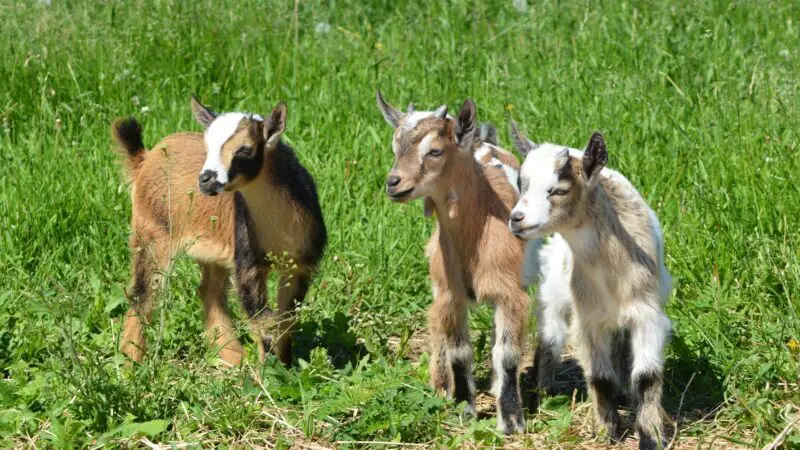
Temperature below 40℉ without supervision is too cold for baby goats.
How Soon Should a Baby Nurse After Being Born?
As soon as the baby goat has a sucking reflex, it must be nursed. The newborn goat doesn’t have much energy reserve, especially when born under cold weather. Some weak ones are tube-fed since they can’t stand up and drink milk from their mothers.
Do Goats Need to Be Separate to Give Birth?
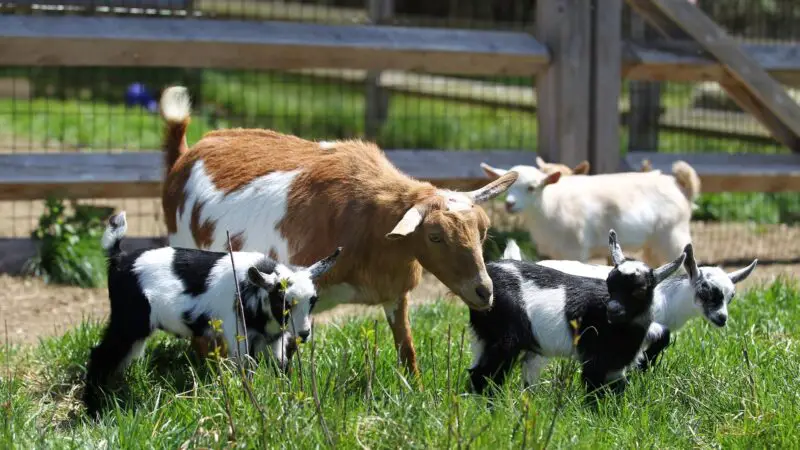
Mother goats need to be separated from bucks to give birth. Bucks can injure or even kill the babies. The separation paves the way to easy and trouble-free delivery as you can execute the necessary steps without hindrance. Thus, it’s good to set up a birthing pen.
Why Do Goats Reject Their Babies?
Based on instinct, mother goats reject their babies that are weak, malformed, or unwell. Another reason is traumatic birth as it causes a lower level of oxytocin, a bonding hormone.
Based on the study, exclusive bonding and selective suckling are essential for mothers to identify their children. During these situations, they use their smelling sense to know their babies.
When the doe is stressed, she only thinks about her sake so she doesn’t have the impulse to take care of her baby.
The kid may have sharp or chipped teeth that hurt the mother when nursing so the mother feels discomfort in nursing. Hence, she keeps her distance from her offspring.
These reasons create different scenarios but they’re not relevant when the mother is not acting responsibly for the babies. Some breeds don’t possess great maternal instincts.
Related: How to Trim Goat Hooves | Easy-to-Follow Steps!
Summary
The newborn or baby goat is called a kid. The initial nourishment is colostrum which is found from its mother’s milk. Those who raise goats should partake in the delivery process and proper care of newborn goats.
It’s to ensure that the kid lives on after birth. Health is also a big concern as these young are prone to diseases.
List of Sources
Caring for Baby Kid Goats of an Unknown Age
